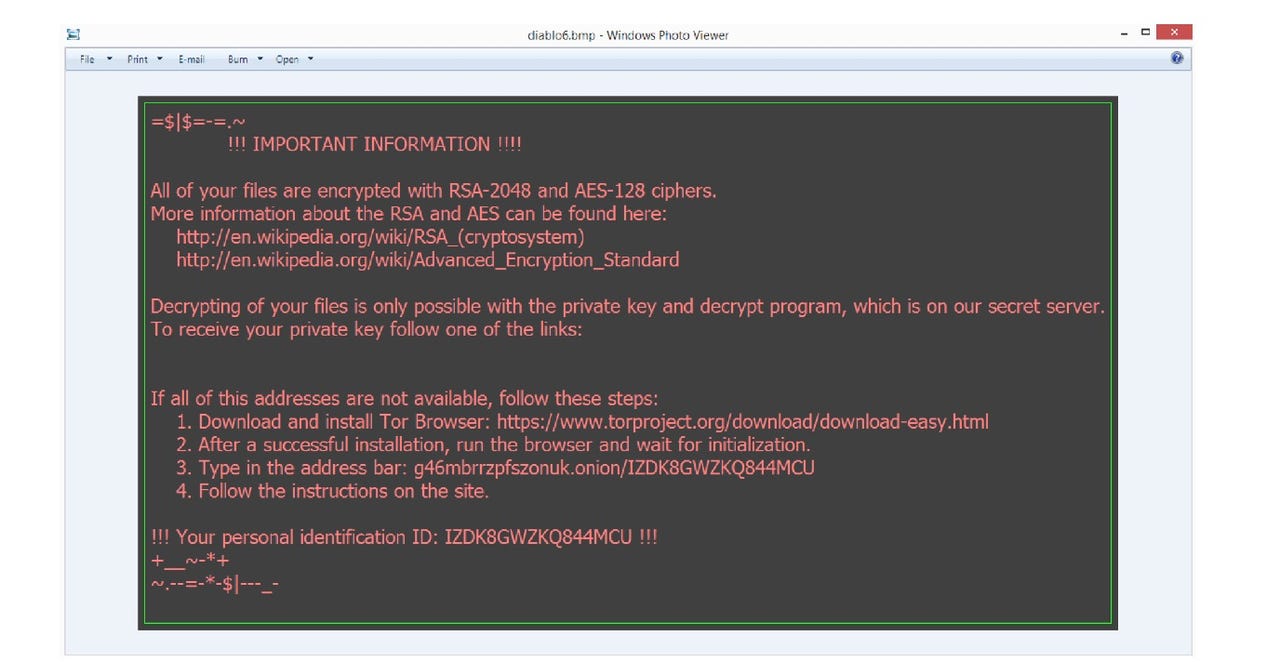Locky ransomware used to target hospitals evolves


Locky is one of the most prolific types of ransomware out there.
Joining the likes of WannaCry and Petya, Locky comes in many different flavors, including Diablo6, Zepto, Thor, and Osiris, and does not seem to be slowing down.
Security
Some of the most famous cases linked to Locky are attacks on core services, including US hospitals.
In February 2016, Locky was used to disrupt the Hollywood Presbyterian Medical Center, which declared an "internal emergency" as systems, databases, and critical information were encrypted and staff members were locked out.
Hospitals rely on electronic records to look after their patients properly and schedule everything from appointments to operations, and faced with a long backup process and catastrophic disruption, the hospital gave in and paid $17,000 in Bitcoin for a decryption key.
Locky has also been linked to a ransomware campaign in August this year in which as many as 23 million phishing emails were sent in only 24 hours.
According to new research released by Cylance, a relatively new Locky variant, dubbed Diablo6, includes a few tweaks which are making detection of the ransomware more difficult for traditional antivirus solutions as well as end users.
In a blog post, the team said Diablo6 performs an attack in two stages. The first is a typical attack vector for ransomware -- a spear phishing email which contains a .zip archive, but something new for the Locky variant.
While masquerading as a legitimate email and attachment, the file actually contains a VBS file which, when decompressed and opened, attempts to connect to Locky's command-and-control (C&C) server for instructions.
If the connection is a success, the VBS script then downloads the ransomware. However, should this stage fail, there is a backup C&C server which the script will attempt to download its payload from.
The word "enterprise" is used while connecting to make the user think the activity is a kind of legitimate business utility. At the same time, the VBS script uses a string to split and load the real instructions. The payload is then downloaded and stored in a temporary folder before executing and encrypting files.
The Locky Diablo6 ransomware targets all kinds of files in its encryption quest, including images, videos, backups, and zipped files. Once encryption is complete, a ransom note is issued on the home screen and then the encryption script deletes itself.
Domains connected to a mail.com email address have been connected to Locky, and in total, 333 domains were registered in 2016 and as recently as October this year.
The researchers are using the registrant to keep an eye on these domains, which have been linked to serving other kinds of ransomware.
"In some cases, authors can make small changes in their code to keep their malware as dangerous to the end user as it was the day they released it," Cylance says. "This appears to be the case the case with the Locky ransomware. This old malware didn't need to have anything new, the authors behind Locky just had to tweak the only part of the process that can never be fixed -- the end user."
In other words, when the malware is good enough to generate fraudulent income, new attack vectors -- such as a fresh set of crafted email campaigns -- are all that are needed to keep criminal operations alive.
This month, ProofPoint researcher Matthew Mesa also uncovered a new strain of ransomware. Dubbed GIBON, the new strain uses macros embedded in malicious documents spread through phishing campaigns to lock PCs. However, as the ransomware is so new, little is known about its demands, target demographics, or origin.
Top gadgets and apps to protect your mobile devices
Previous and related coverage
Ransomware: An executive guide to one of the biggest menaces on the web
Updated: Everything you need to know about ransomware: how it started, why it's booming, how to protect against it, and what to do if your PC's infected.
Watch out: GIBON enters the ransomware space
The new ransomware strain is the latest to target your PC for cash.
'Massive' Locky ransomware campaign targets hospitals
FireEye researchers have spotted a surge in cyberattacks on hospitals in the US -- and they're using a new infection technique.